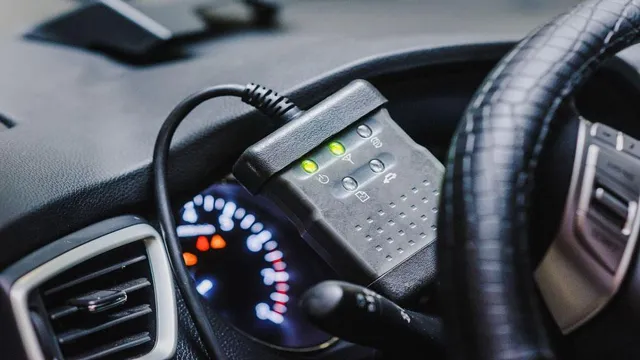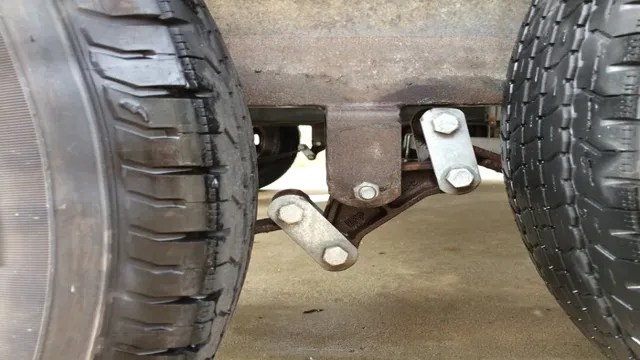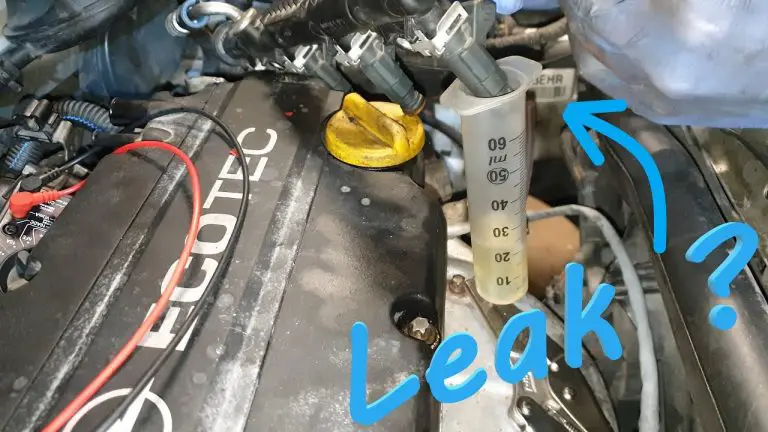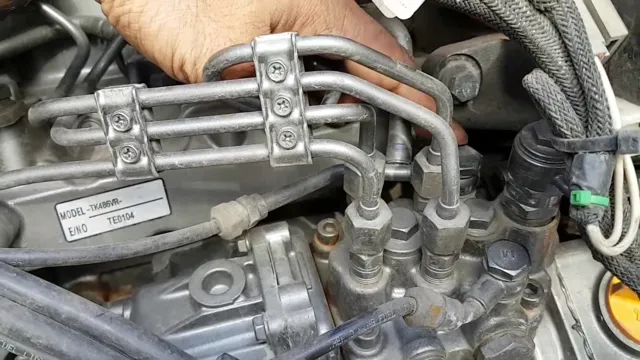Bypassing Readiness Monitors: A Comprehensive Guide to Smog Test Success!
Have you ever experienced a situation where your car won’t pass emissions because of the dreaded “readiness monitors” status? It can be frustrating, time-consuming, and expensive to fix the problem. But what if there was a way to bypass the readiness monitors and still pass the emissions test? In this blog post, we’ll explore the methods and techniques you can use to bypass ECU readiness monitors and pass the emissions test without spending a fortune. So, buckle up and let’s dive into the world of Readiness Monitors!
What are readiness monitors?
If you’re experiencing trouble passing your vehicle’s emissions tests, then you may have come across the term “readiness monitors.” These are self-diagnostic tests that your car’s computer runs to check if all of its emission-related systems are functioning correctly. Different types of readiness monitors exist for various components of your vehicle, including the fuel system, oxygen sensors, and catalytic converter.
If the system doesn’t detect a problem after its test, it sets a readiness monitor for that specific component. If all of your vehicle’s readiness monitors are set, then it’s considered “ready” for an emissions test. However, if one or more monitors are not set, then you may experience issues passing your emissions test.
It’s important to note that resetting your vehicle’s computer or battery will clear all readiness monitors, and it takes some time and driving under specific conditions for them to reset themselves. As for bypassing readiness monitors, it’s illegal and can lead to more severe consequences down the line, such as failing an emissions test or having your vehicle flagged for not meeting emissions standards. It’s best to fix any issues that may cause a monitor not to set to ensure you pass your emissions test.
Definition of Readiness Monitors
Readiness monitors are diagnostic tools present in modern cars that help monitor and track certain emissions and systems. These are part of a car’s onboard computer system and are constantly checking if all systems are functioning correctly. Specifically, readiness monitors check the emissions control systems such as the catalytic converter, evaporative emissions system, and oxygen sensors.
By checking these systems, readiness monitors can quickly detect if there is a problem with any of them. They generate a diagnostic code which helps mechanics identify what needs to be fixed. The importance of readiness monitors cannot be understated since they play a crucial role in ensuring that your vehicle is running smoothly and efficiently.
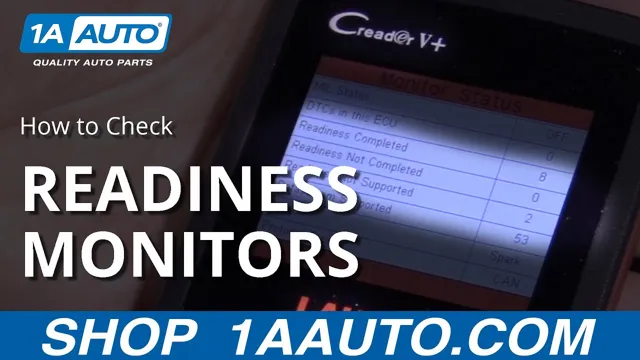
Purpose of Readiness Monitors
Readiness monitors are an essential aspect of modern car technology. These monitors are designed to constantly check the status of the vehicle’s emissions systems and other factory settings. Their primary purpose is to ensure that the vehicle is running at optimal performance levels, which in turn, helps the environment by reducing harmful emissions.
Without readiness monitors, it would be very difficult to keep track of potential issues or malfunctions within the vehicle. They work by checking sensors, circuits, and other parts of the vehicle, helping mechanics pinpoint any potential problems before they become serious issues. Think of readiness monitors as your car’s internal watchdog, keeping your vehicle running smoothly and efficiently while helping to protect the environment.
So, the next time you’re at the mechanic, ask about your car’s readiness monitors to ensure that you’re doing your part to keep your car running at its best.
Why bypass readiness monitors?
If you’re wondering how to bypass readiness monitors, it may be because these monitors are preventing you from passing your emissions or smog test. While it may be tempting to find a way around these monitors to pass the test, it’s important to understand why they exist in the first place. Readiness monitors are designed to ensure that your vehicle’s emissions control system is functioning properly before it’s tested, which is required by law in many areas.
Attempting to bypass these monitors can result in a failed test, fines, or even legal consequences. Instead, it’s best to address any issues with your emissions control system and allow the readiness monitors to properly detect and diagnose any problems. By doing so, not only will you pass your emissions test, but you’ll also be doing your part in reducing harmful vehicle emissions.
Common reasons for bypassing readiness monitors
Readiness monitors are an essential part of a vehicle’s on-board diagnostics system, and bypassing them can lead to serious issues. However, some vehicle owners choose to bypass these monitors for various reasons, such as when they need to pass an emissions test or when they are unable to solve a persistent diagnostic trouble code (DTC) issue. Bypassing readiness monitors involves clearing the vehicle’s memory of error codes, which can result in the erroneous passing of an emissions test.
Additionally, clearing these codes can make it difficult to diagnose and fix underlying issues with the vehicle. Although bypassing readiness monitors may seem like a quick fix, it can ultimately lead to more extensive and costly repairs down the line. Therefore, it is always best to follow proper diagnostic procedures and avoid bypassing readiness monitors.
Impact of bypassing readiness monitors
Bypassing readiness monitors in your vehicle may seem like a quick solution to passing an emissions test or turning off a check engine light, but it can have serious consequences. Readiness monitors are sensors in your car’s engine that test various systems to ensure they are functioning properly. When a vehicle is serviced or repaired, these monitors are reset, and it takes time for them to test each system again.
Bypassing them means that the vehicle may not be prepared to catch potential issues, leading to severe problems down the road. It is always best to let your vehicle go through the necessary checks and balances to ensure it is running optimally. Don’t take shortcuts that could end up costing you more money and headaches in the long run.
How to bypass readiness monitors?
If your vehicle is failing readiness monitors, there are a few things you can do to bypass them. One option is to use a scan tool to clear the codes that are triggering the monitors. This may temporarily solve the problem, but it won’t fix the underlying issue.
Another option is to drive the car extensively before bringing it to get inspected. This can help the monitors detect and record the necessary data. However, some states and counties have laws in place that prohibit resetting the monitors, and attempting to bypass them can result in a failed inspection.
Ultimately, the best course of action is to identify the underlying issue and repair it accordingly. This will not only ensure that your vehicle passes inspection but also prevent potential problems down the road. Remember, a few minutes of research can save you time and money in the long run.
So, before attempting to bypass even a small issue, consult a professional mechanic or your vehicle’s manual for proper guidance.
Steps for bypassing readiness monitors
If you’re looking to bypass the readiness monitors on your car, there are a few steps you can take. First, make sure that your vehicle is up to date on all its maintenance. This includes changing the oil, replacing the air filter, and tuning up the engine.
Once you’ve done that, disconnect the battery for at least 30 minutes to reset the computer. Then, drive your car at normal speeds for at least 30 minutes, making sure to hit both city and highway speeds. During this time, all the readiness monitors should reset.
If they don’t, you may need to take your car to a mechanic to have them manually reset the monitors. Keep in mind that bypassing readiness monitors is not always legal, and can result in your car failing an emissions test or being flagged as non-compliant. It’s best to consult with a professional before attempting to do so.
Tools and equipment required
If you are attempting to bypass the readiness monitors in your vehicle, there are a few tools and equipment that you will need. The first item on your list should be an OBD-II scanner, which is specifically designed to read the diagnostic information within your car’s onboard computer system. With this device, you can access any pending or stored trouble codes that may be affecting the readiness monitors.
You will also need an emissions analyzer to help you determine whether your vehicle’s emissions levels are passing. In addition, you might need jumper wires to manually reset the monitors and a canister of carburetor cleaner to clean out any buildup in the engine. By using these tools, you can take the necessary steps to effectively bypass the readiness monitors and ensure that your vehicle is operating at optimal levels.
Conclusion
In conclusion, bypassing readiness monitors is like putting a band-aid on a broken arm. Sure, it may temporarily fix the issue, but it’s not a long-term solution. Instead, take the time to properly diagnose and fix any problems with your vehicle to ensure it runs smoothly and efficiently.
Trust us, your car will thank you later.”
FAQs
What are readiness monitors?
Readiness monitors are the system in a vehicle that checks if all the emissions control components are working properly.
Why would someone want to bypass readiness monitors?
Some people may want to bypass readiness monitors to pass emissions testing without having to repair or replace faulty emissions control components.
Can you legally bypass readiness monitors?
No, it is illegal to bypass readiness monitors as it violates emissions regulations and can result in hefty fines.
Is there a way to reset readiness monitors without bypassing them?
Yes, driving the vehicle under specific driving conditions called a “drive cycle” can reset readiness monitors and ensure all components are working properly.

